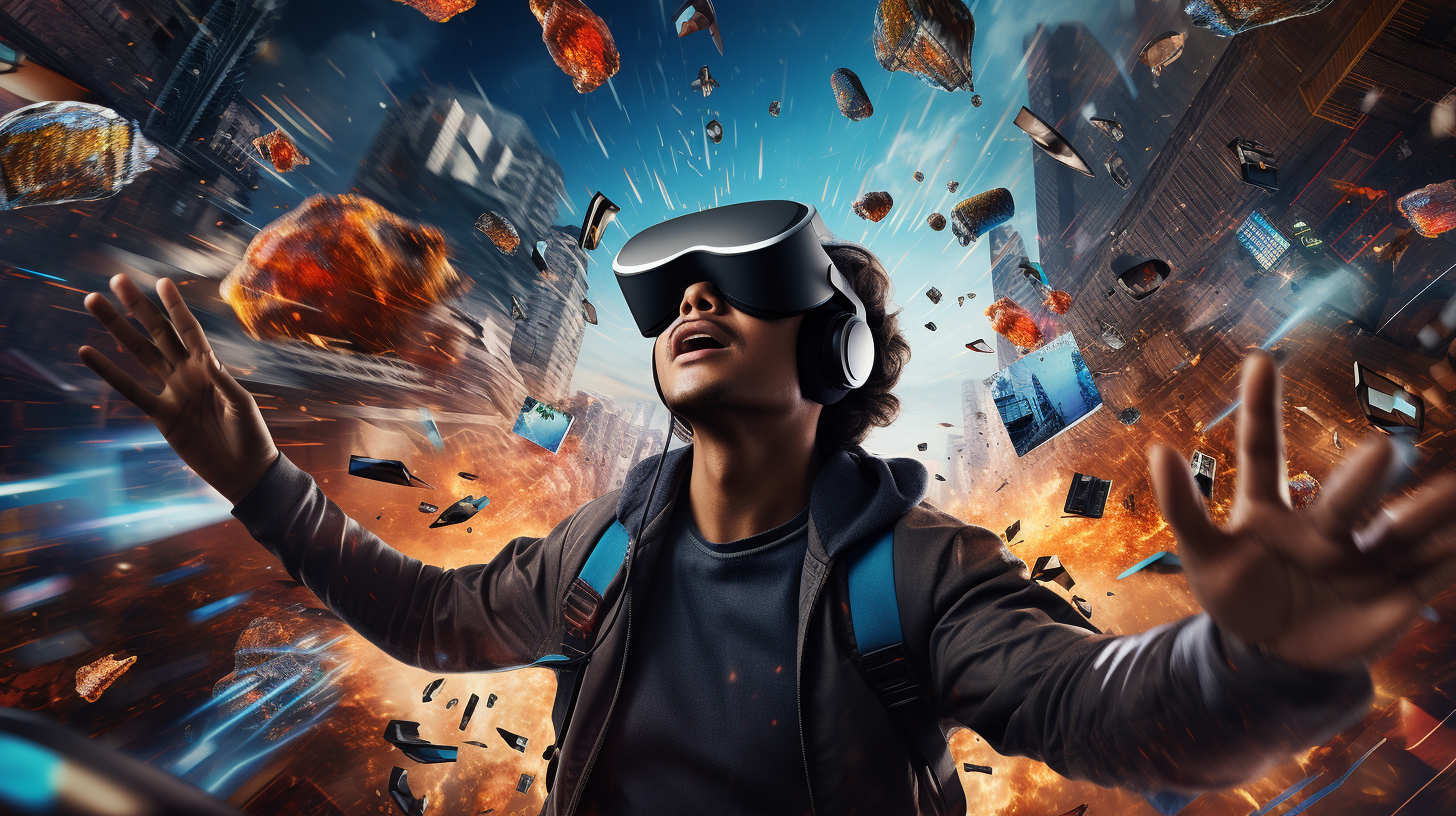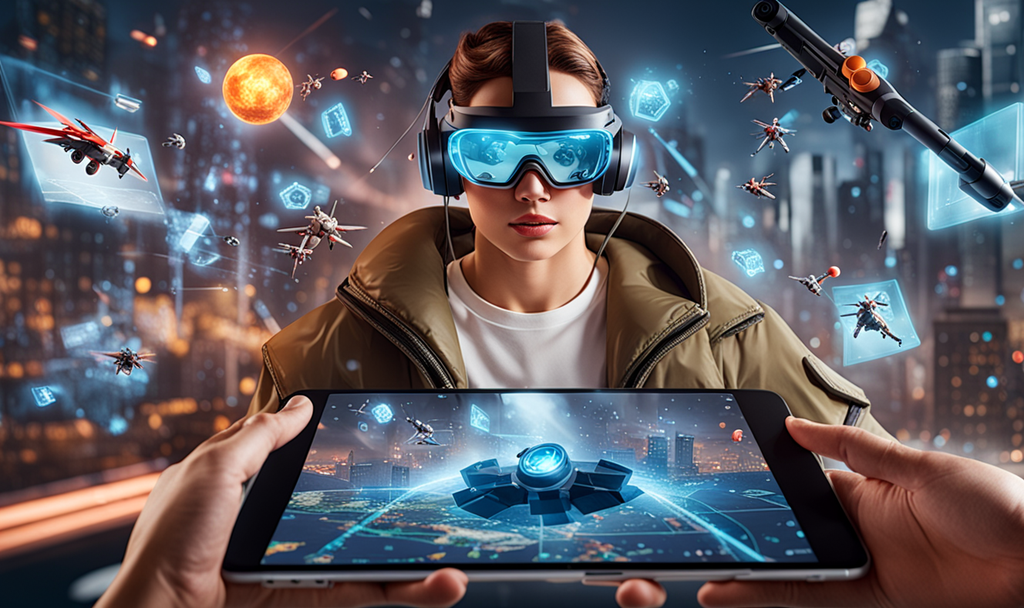VR and AR are transforming esports into immersive worlds without boundaries.
Introduction to VR & AR in Esports
Esports used to be held in basements, livestreamed with unstable connections, but now it is a global entertainment business that can compete in both organization and sponsorship terms with most of the traditional sports and reach audiences similar to them. Advancements in technology have been a major catalyst behind this evolution, and the technology that is currently leading this change is the immersive technology, namely Virtual Reality (VR) and Augmented Reality (AR). Although one is likely to mix the two under the same term, “XR,” they serve different purposes in competitive gaming: VR modifies the playing experience by placing players in virtual settings, whereas AR modifies the observing experience by letting the audience engage more with the games played by the competitors. Collectively, these technologies have the potential to completely transform the competitive, commercial, and cultural aspects of esports in ways that are just starting to be investigated.

What is Virtual Reality (VR)?
A computer-generated simulation that creates an immersive, interactive environment that feels real to the user. By wearing a VR headset, which can be purchased from multiple brands like Oculus, HTC Vive, or PlayStation VR. Users of the VR headset can now step into a 3D digital world where they can look around, move, and interact with objects as if they were physically present.
Key features of VR:
- Immersion: It surrounds your senses (mainly sight and sound, sometimes touch through haptic devices) to make you feel “inside” the virtual world.
- Interactivity: Users can interact with virtual objects, characters, or settings using controllers, hand tracking, or even full-body tracking.
- Simulation: It can replicate real environments (like a city or classroom) or create entirely imaginary worlds (like space adventures or fantasy realms).
VR is widely used in gaming, training simulations, education, healthcare, architecture, and entertainment because it allows people to experience scenarios that might be impossible, dangerous, or expensive in real life.
Common Examples of AR:
- Beat Saber (gaming) – A music rhythm game in VR.
- Half-Life: Alyx (gaming) – A story-driven VR shooter.
- Medical training simulators – For practicing surgeries safely.
- Virtual property tours – Explore homes or buildings before construction.
What is Augmented Reality (AR)?
Augmented Reality (AR) is a technology that overlays digital elements—such as images, sounds, animations, or information—onto the real-world environment, usually through devices like smartphones, tablets, AR glasses, or headsets.
Unlike Virtual Reality (VR), which places you inside a fully simulated digital world, AR keeps you in the real world and simply enhances it with computer-generated content.
Key Features of AR:
- Real-world + digital mix: You still see your physical surroundings, but with added digital layers.
- Interactive: AR objects can move, respond, or provide information when you interact with them.
- Accessible: It often works with everyday devices (e.g., your phone’s camera and screen).
Common Examples of AR:
- Pokémon GO: A mobile game where Pokémon characters appear in your real-world surroundings through your phone’s screen.
- IKEA Place app: Lets you see how furniture would look in your home before buying.
- AR navigation: Apps that project arrows and directions onto streets through your phone camera or AR glasses.
- Medical training: Doctors can see digital overlays of anatomy on patients during learning or surgeries.
What VR and AR Bring to Esports
Virtual Reality immerses players into real-time simulated worlds that are rendered directly to the headset and uses motion control that allows interactions that behave similarly to those in the real world, contiguous awareness, and movement. That immersion in an esports setting brings an element of physicality and realness that other competitive experiences never had: players will have to consider stamina, body movement, and three-dimensional awareness, as well as game tactics.
On the other hand, Augmented Reality superimposes phenomena and contextual interactive graphics over real life. To esports producers and broadcasters, AR provides a serviceable asset in making stories richer and more understandable tactics to the viewer, spinning heatmaps, paths, and player statistics in a fashion that makes intricate instances comprehensible. VR and AR expand the competitive gaming ecosystem with physical skill in gameplay and provide situational awareness in viewing, which makes the two technologies complement each other.
How VR Is Changing Competitive Play
Competition changes its essence when the major medium of the competition is VR. Reflexes and game-sense are important, but the quality of movement, energy expenditure, and awareness in a three-dimensional space is likewise considered by a player. The change is creating a different type of competitor that combines mental tactics and athletics, along with the drive of an onlooker, which appeals to the audience. VR is opening up tournament types that simply could not happen before: free-roam arenas with physical game pieces, hybrid reality capture where a player physically moving in the game space has a direct effect on their game results, and asymmetric competition where VR players face off against traditional game format players in game types never seen before. Such formats attract cross-over audiences with the followers of conventional sports and the companies that like live experiences, which broadens the possible target following for esports events.
How AR Enhances Spectatorship
The viewer experience has been the most significant influence on early AR. Esports production can be cluttered with detail: maps, item timers, player inventories, and micro-statistics, and AR can visually simplify this information to create a visually interesting display. Audience members may walk through a slow-motion tactical breakdown using floating diagrams or may toggle interactive overlays, which show a player view, biometric data, or a real-time strategic commentary. With in-venue audiences, AR makes passive viewing an active experience; fans can access player replays or highlight signs of key plays on mobile or dedicated screens, or tiered-in branded treats integrated into the stage. Concisely, AR simplifies the tracking of games by new customers and enhances intensity in games by regular observers, enhancing stickiness and augmenting the importance of broadcasting real estate to advertisers.
Business Models and Revenue Opportunities
The commercial potential that immersive tech has on esports is significant. VR may allow a premium experience to include purchase of virtual seats in a virtual venue, meet and greet with the pro athletes as a VIP in VR, or paid access into an interactive training session with motion analytics. A second vector of monetization exists in the form of location-based VR centers: equipped with top-of-the-line hardware and inclined toward a social setting, such centers can appeal to the casual player and can host tournaments, thus generating revenues through admission and spending within the physical location. AR unlocks the possibility of tapping the potential of sponsorship and advertising, which is more integrated than the ones used in conventional forms; the brands could be integrated within the environment, within the replays, and customized to the viewers without any impairment to the viewing process. Moreover, VR competition-generated motion and spatial data can be aggregated to create analytics product lines used by coaches, scouts, and content creators, providing a data-driven economy in the XR ecosystem.
Technical and Ethical Challenges
There is no friction-free adoption of VR and AR in esports. VR headsets and haptic gadgets of high quality are still costly to most users, resulting in a prohibitive home market of a fully global competitive pool. It is essential that the equipment and input method, as well as the anti-cheat, be standardized across the tournaments; otherwise, competitive fairness may be compromised as any differences in track fidelity or peripheral advantage undermine the fairness of the competition. Health/safety is also of importance: remaining in VR too long may cause motion sickness or even physical fatigue, which requires a change in rules, time, and physical rest, and the development of ergonomics standards among pro players. The ethical issue and the privacy realm have the potential to include the issue of consent, being anonymized, and possible misuse, which will need to be fixed proactively by the organizers and the players in the hardware industry.
Early Successes and Case Studies
In spite of the challenges, initial adopters are proving plausible models. The existence of league VR, dedicated tournaments has created competition ladders and viewers. VR rings using location-based games have already hosted both amateur and professional competitions, and attracted spectators interested in the novelty and the social atmosphere of in-person VR gaming. Already being tested on every phase venue of a variety of events, AR-powered broadcasts have received a positive initial response, with proper thought-through overlays being able to both extend the time spent in front of the screen without upsetting long-term fans. These case studies demonstrate that well-designed and considered investment leads to the stabilization of immersive technologies, which can become the same sustainable format that does not disrupt currently existing esports types at all.
The Road Ahead
Hardware innovations, innovations in production, and the adoption of XR in esports will determine the future. With lighter, cheaper headsets, with cloud rendering and 5G lowering the technical threshold, VR will become more open to players and the viewing audience. AR is much less device-dependent and will scale fast in broadcast and venue applications. Further integration with AI, such as providing real-time coaching, predictive analytics, or custom overlays, can also make the tool even more rapid and enhance the level of engagement. In the end, it is probable that the technologies will intersect with the more general trends in the sphere of social and entertainment life, transforming the virtual arenas into the spaces of the perpetual social interaction and into the world of the immersive interactivity, having become the dress rehearsal of the key esports broadcasts.
Conclusion
VR and AR are leaving the experimental stage and becoming revolutionary applications in the esports sphere. VR also introduces the element of physicality and space into the competitive sport activity, resulting in new types of athlete profiles and gameplay formulas, whereas AR makes broadcasts more informative, interactive, and commercially appealing. The road to mainstream adoption is littered with technical, financial, and ethical barriers, yet the potential commercial payoff and the experiential value of the viewer experience present, XR is a strategic focus of teams, organizers, and media. Publishers and other content creators should all take this moment to lead coverage of VR and AR as they rise, as another era of competitive gaming takes shape through long-form analysis, immersive reporting, and explainer material to keep this audience engaged and interested in the best ways possible.
